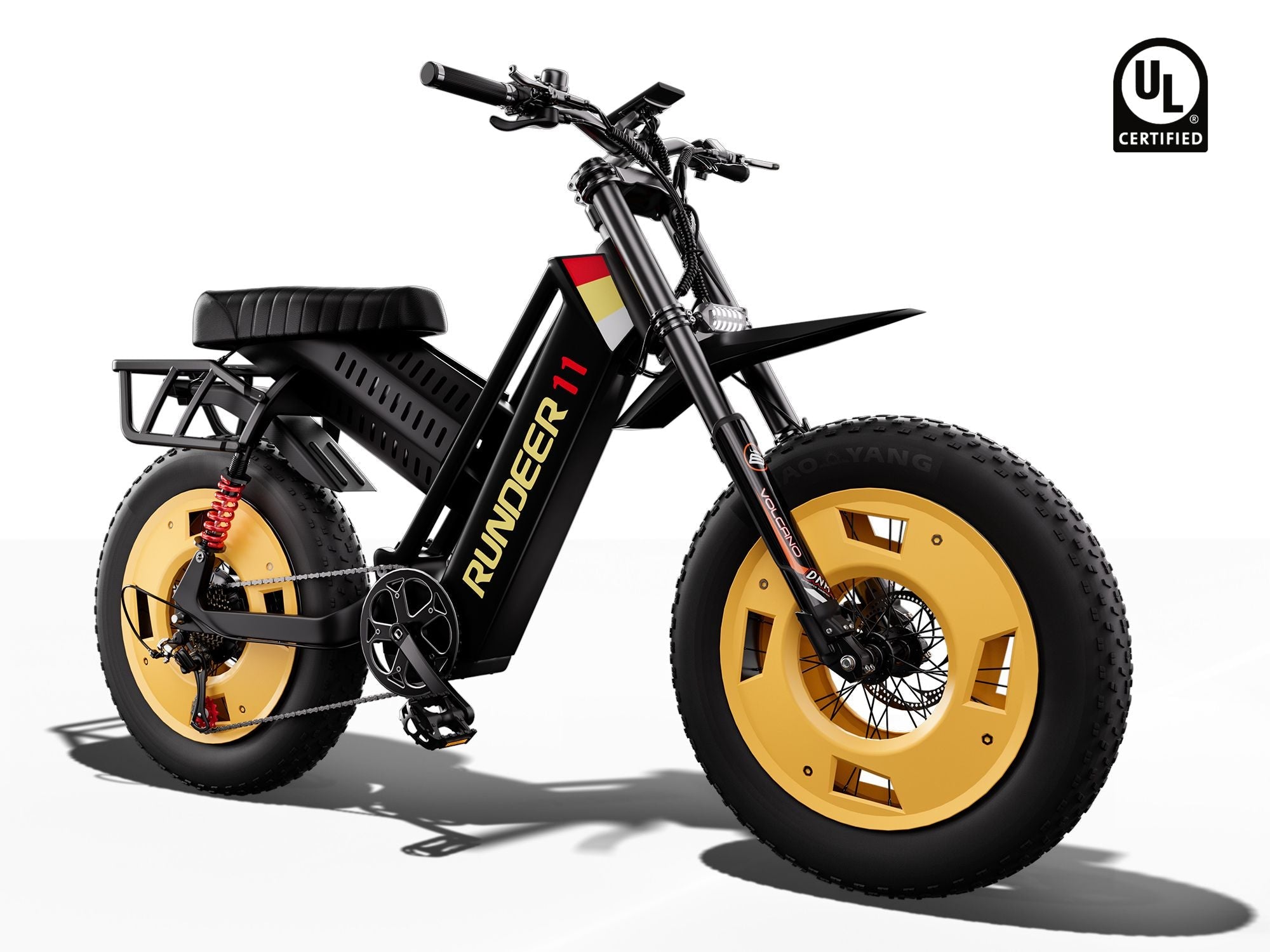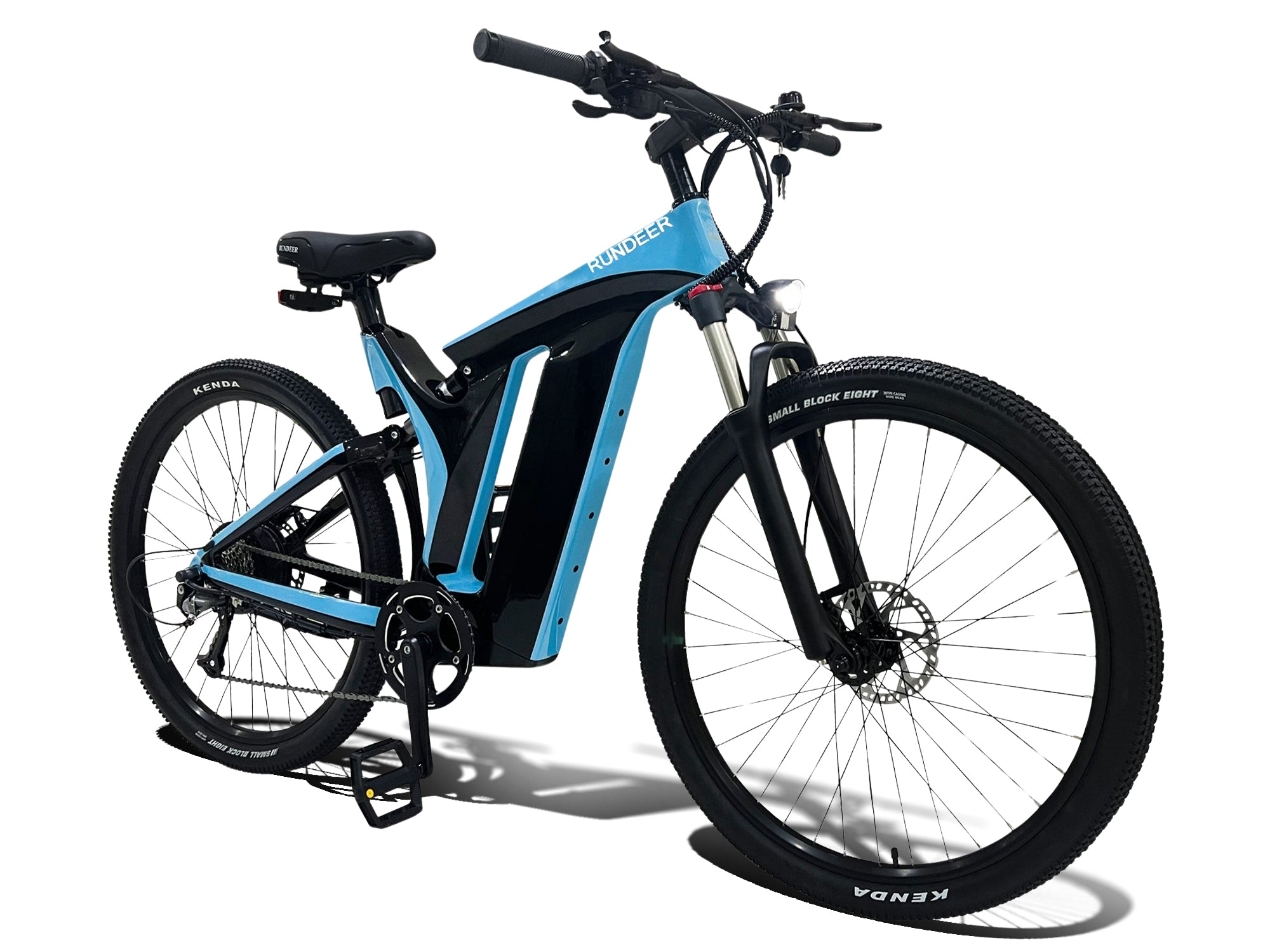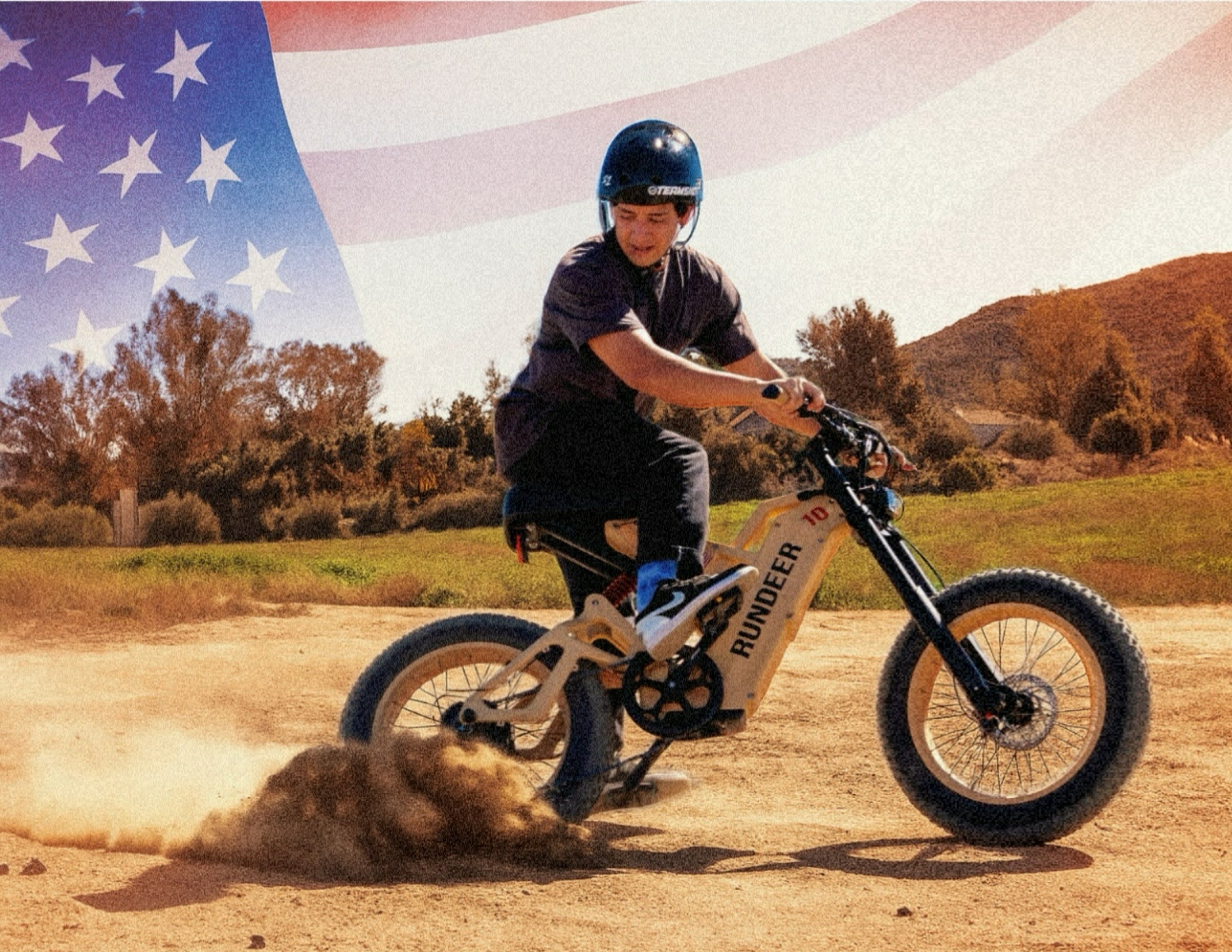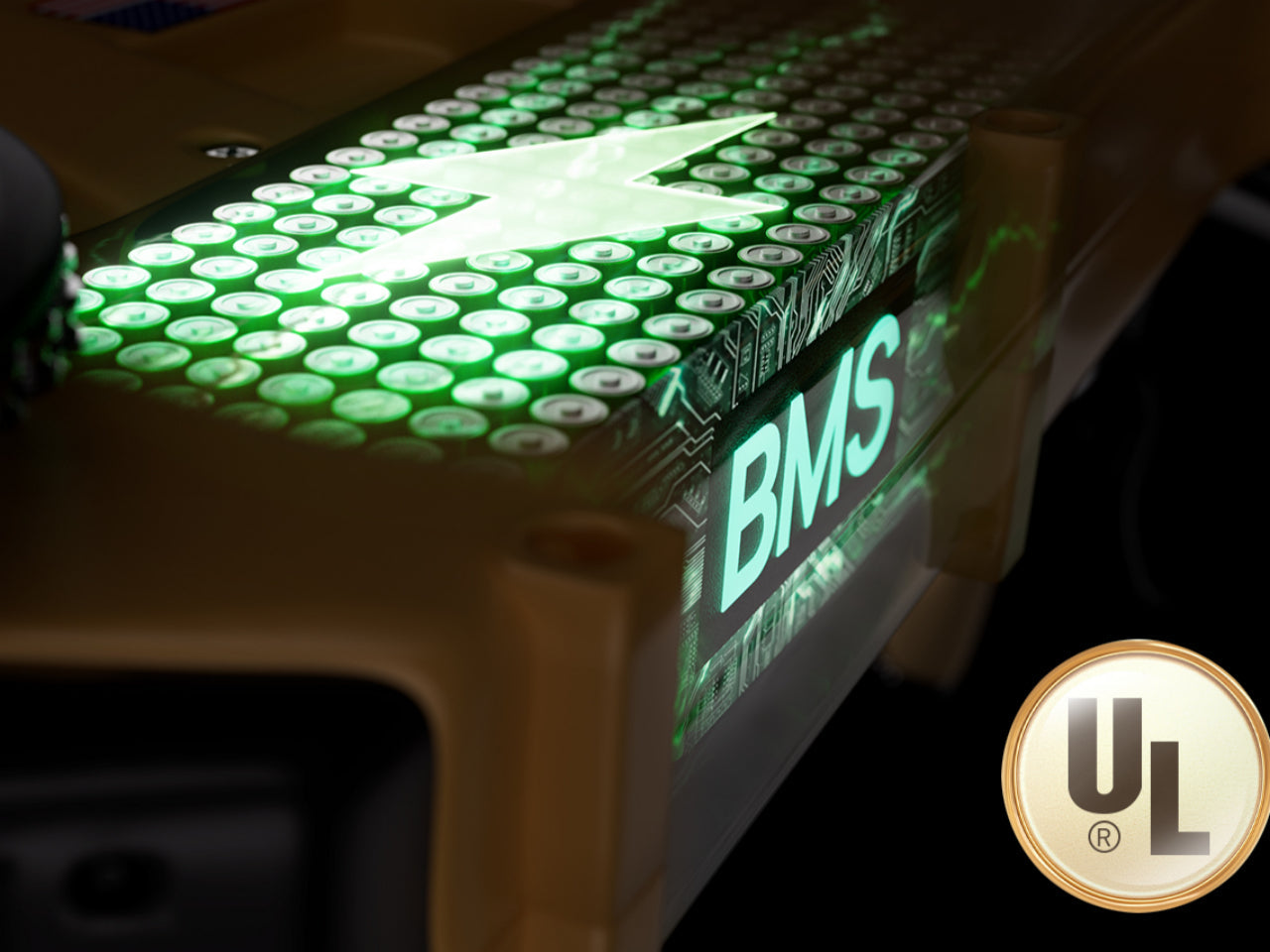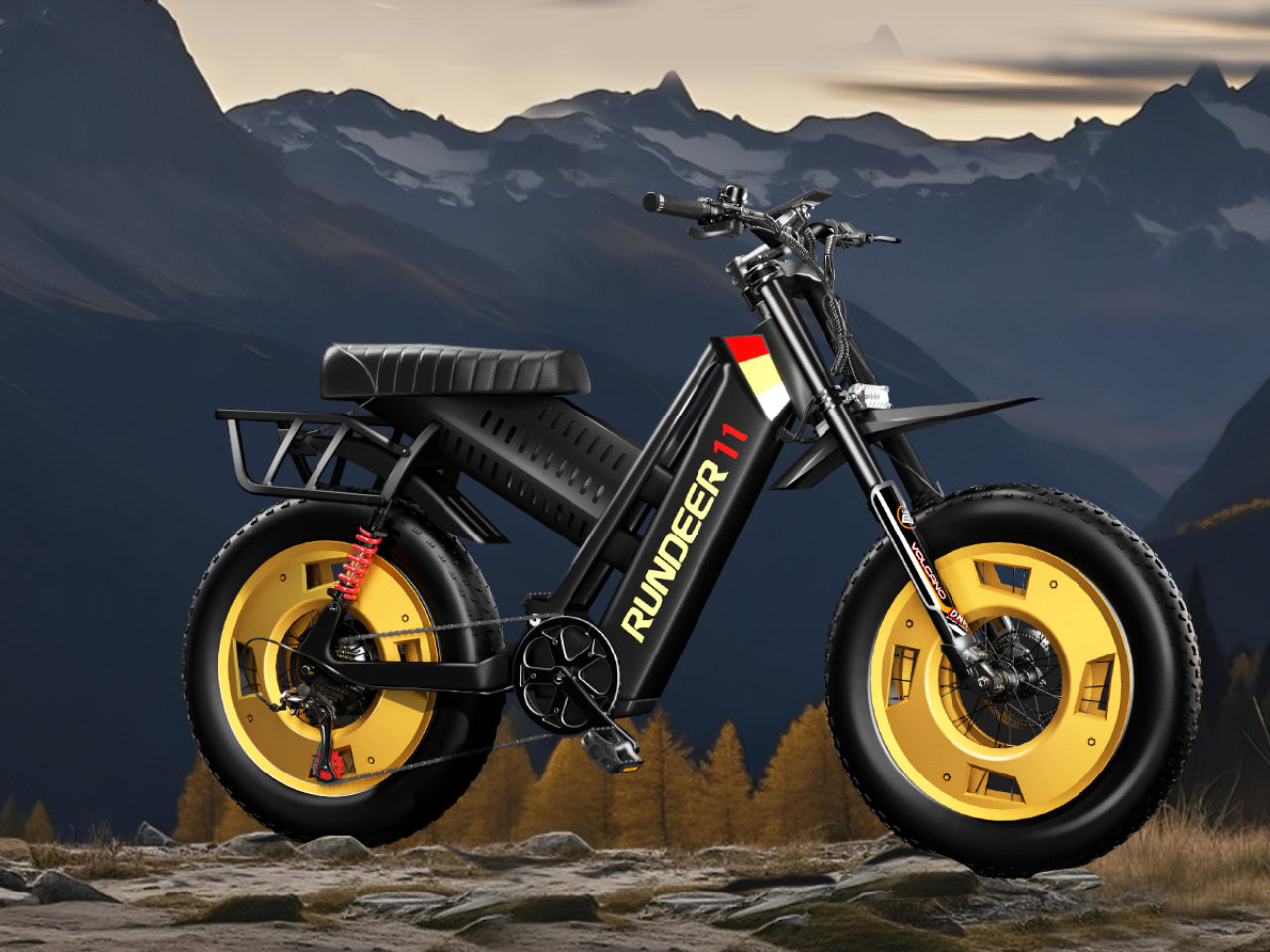Your e-bike's tires are like shoes – they determine where you can ride and how comfortable the ride will be. The motor gives you power, but the tires are what actually grip the road or trail. Choosing between wide ("fat") and narrow ("skinny") tires makes a big difference in how your e-bike performs. It affects things like comfort, stability, speed, and how far you can go on a charge.
The Tale of Two Tires: Knowing Your Choices
When you're shopping for an e-bike, you'll quickly see that tires come in very different widths. This isn't just about looks. The width of your tires really changes how the e-bike works.
Fat Tires: The Off-Road Champions
Fat tires are usually between 3.8 and 5 inches wide. They're the big, tough-looking tires that make an e-bike look ready for anything. These wide tires were designed for specific reasons, making them ideal for certain types of riding.
What makes fat tires great is how well they handle tough terrain. Because they're wider, they spread your weight over a larger area. This lets them "float" over soft ground like sand, snow, and mud, where skinny tires would sink. It's simple physics – more tire surface means less sinking.
This wider shape also makes the bike more stable. If you're new to riding or carrying things, a fat tire e-bike feels safer. The wide base makes the bike feel more solid, especially when you're riding on bumpy ground or turning on loose surfaces.
One of the best things about riding an off-road e-bike with fat tires is how comfortable it is. The large amount of air in the tires acts like a built-in suspension system. You can run these tires with less air pressure (usually 5-15 PSI). This lets the tire mold around bumps instead of bouncing over them. This makes for a smoother ride that absorbs bumps and reduces how tired you get on long rides.

Skinny Tires: All About Speed
Skinny tires are usually between 1.5 and 2.2 inches wide. Some road bikes have even thinner tires (28-42mm). These sleek tires are all about going fast and using less energy.
Because skinny tires touch the ground less, there's less friction slowing you down. This means they need less power to keep moving. This can make you go faster or get more miles out of your battery.
Skinny tires are also lighter. The tires and the rims they use weigh much less than fat tires. This lighter weight makes it easier to speed up and makes the bike feel more responsive. It also makes the whole e-bike lighter, which is helpful when you're carrying it up stairs or putting it on a car rack.
Skinny tires handle great on smooth roads. They turn quickly, corner easily, and just feel more nimble. This is really helpful when you're riding on busy city streets or trying to get through traffic.

Where the Rubber Meets the Road: Real-World Performance
Traction and Stability
What the road is like makes a big difference in how your tires work. Fat tires are great when it's hard to get traction:
- They keep moving on sand or gravel where skinny tires would get stuck.
- In the winter, they grip better on snowy roads.
- On muddy trails, the strong treads on fat tires help you get a good grip.
Skinny tires, on the other hand, are best on smooth roads. Because they touch the ground less, they put more weight in one spot, which actually helps them grip better on clean, dry roads. It's like hiking boots versus running shoes – each one is better for different things.
The Comfort of Fat Tires
How comfortable a ride is depends on a lot of things, but tires are a big part. Fat tires make it feel like you're riding on a cushion, which can make a bumpy road feel much smoother. This is especially helpful on:
- Gravel roads with lots of bumps.
- City streets with potholes and cracks.
- Trails with roots, rocks, and uneven ground.
For many people, a fat tire e-bike means you don't need to spend money on fancy suspension. The tires soak up the bumps and vibrations, so they don't go straight to you, which makes you less tired on longer rides.
Skinny tires usually have more air in them (40-70 PSI), so you feel the road more. This isn't always a bad thing – many experienced cyclists like feeling connected to the road when it's smooth. But on rough roads, feeling every bump can get uncomfortable if you don't have good suspension.
Speed and Efficiency
When you're choosing between a city commuter and an off-road e-bike, battery life is important. Your tire choice will affect how far you can go before running out of power.
That's because fat tires are wider and have more deeply grooved treads. This creates moreresistance to rolling. Because of this, fat tires can reduce your range 10-20% compared to skinny tires under the same conditions. The motor has to work harder to handle the additional friction.
For recreational riders who only want to have a good time, it does not matter. But when you are commuting or traveling a long distance, skinny tires are more economical. That is to say that you will not have to be concerned about the battery dying.
Speed is the same principle. Skinny tires have less rolling resistance on hard roads. That implies you can go faster with the same amount of power. Fat tires excel at sustaining speed through bumpiness and obstructions. But on smooth roads, skinny tires are typically faster.

Finding Your Perfect Match
The choice of fat or thin tires on an e-bike depends on how you ride. Be honest and ask yourself the following:
Where do you ride most often?
- Mostly paved roads and bike paths? Skinny tires are a good choice.
- A mix of gravel, dirt, and pavement? Consider medium-width tires (2.3-3 inches).
- Often off-road on tough trails? Fat tires give you the versatility you need.
What's most important to you when you ride?
- Top speed and efficiency for commuting? Skinny tires are best.
- Comfort and stability, especially if you have back or joint problems? Fat tires offer good cushioning.
- Good in all seasons and weather? Fat tires are more stable and give you confidence in tough conditions.
Consider the weather where you live. Fat tires are great if you get snow or a lot of rain that makes things muddy. They give you better traction so you can keep riding when skinny tires might get stuck.
Your fitness level also matters. E-bike motors help with hills, but fat tires take more effort to pedal if the battery runs out. Skinny tires are easier to pedal without the motor, which can be important on long rides or if you're worried about the battery dying.
Choose the Tire That Fits Your Journey
There's no single "best" e-bike tire. It all depends on how and where you like to ride. Fat tires are great for adventure. They're comfortable and can handle all kinds of terrain. Skinny tires are efficient and fast, which is good for commuting and riding on roads. Think about where you'll be riding most of the time, and then pick the tires that fit. The right tires can turn your e-bike into the perfect way to explore.

